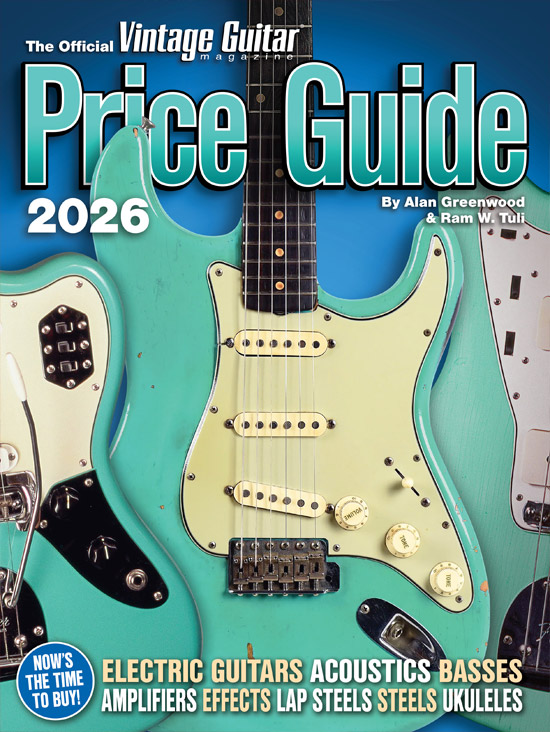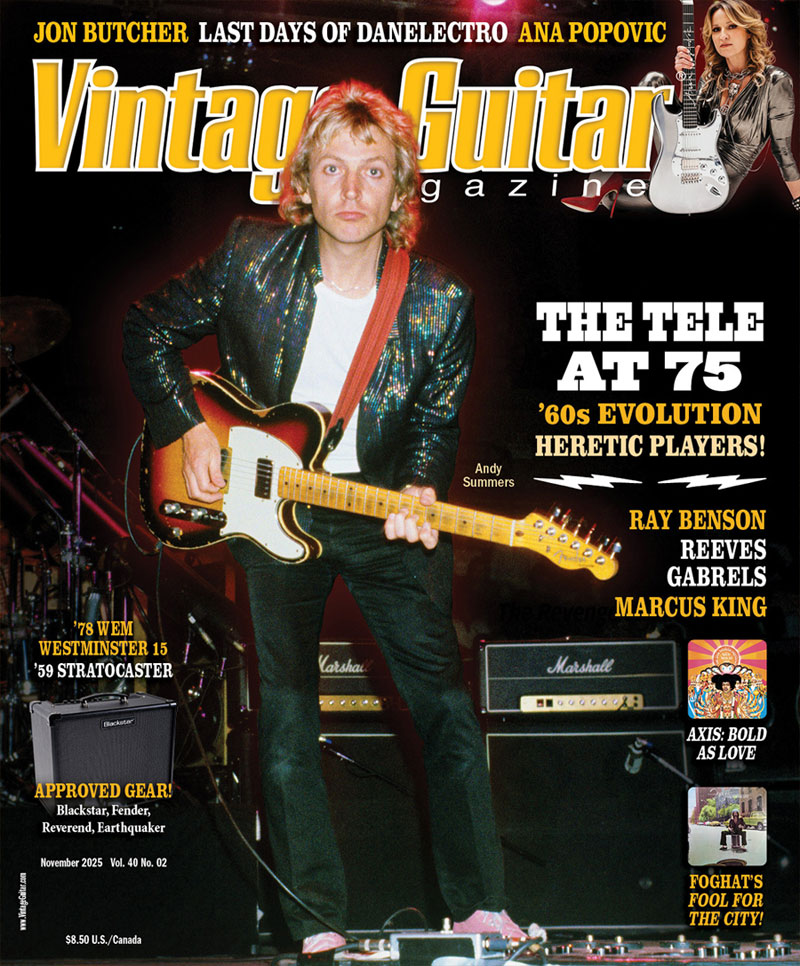
He is a living legend, a national treasure, and an inspiration to musicians and music lovers of all stripes.
Pat Martino’s exemplary career spans four decades, and his personal tale of trial and tribulation is one of the most powerful and miraculous success stories in music history. From his formative years as a sideman (or “sidekid”) in the rough-and-tumble chitlin circuit and smoky jazz bars to his inevitable ascendancy in the rarefied circles of the jazz world, Pat has remained true to his artistic ideals with staggering results. An artist more interested in exploring new musical terrain than rehashing old formulas, Martino is a true pioneer and a self-styled alchemist of the guitar. The most obvious and striking aspect of his magic is his seemingly effortless and unflagging ability to transform scales and licks into long, mesmerizing streams of consciousness.
Like the magic potions of the legendary alchemist, Martino’s unique conceptions are conjured up regularly from a bottomless well of ideas. He personifies the five T’s – tone, time, technique, touch, and taste. But don’t take my word for it, just give any of his discs a spin, or ask any knowledgeable member of today’s musical cognoscenti. Martino’s fans and admirers are legion and have included players far outside the genre, like Pete Townshend and the late Jerry Garcia.
Today, Martino is supreme among the jazz voices of his generation. Following years of accomplishment, he continues crossing and redefining boundaries in his art. He is a true musical globalist; comfortable with and routinely blending straight jazz, bebop and swing, jazz rock fusion, blues, ethnic sounds, avant-garde and mathematical music. However, his priorities are communication and the social impact of his playing, and constantly challenging himself.
We caught up with the master while he was on the heels of completing his newest album, Think Tank (Blue Note, 2003).
Vintage Guitar: What was your early musical background?
Pat Martino: I was introduced to music by my father. He had an interest in jazz music and was an amateur guitarist at a rudimentary level. He had a guitar around the house and would sing songs on Saturday, after work.
My father worked as a tailor in a clothes factory. Both he and my mother worked in what was referred to as “sweat shops” until they finally opened their own clothing store. Anyway, he used to sing songs using the guitar as an accompaniment, just strumming chords. These were in the culture; they were Italian songs he would sing to my mother.
Were you interested in guitar at an early age?
I was curious. I’ve been told that when I was about three years old I went into my father’s bedroom to look for his guitar. He kept his guitar under the bed. I started playing around with it and cut my fingers on it, on the strings. It was the first time I had bled. Apparently, I began painting the bedroom wall with my blood. That’s how my parents found out that I had been playing with the guitar. From that point my father kept me away from the instrument completely.
How did you begin playing guitar?
When I was about 11 my father helped a favorite cousin, Joey Azzara, get a guitar. He wanted to be a guitar player. I was envious and got on a campaign to have my father buy me a guitar. He bought me a $10 guitar from a pawn shop when I was 12. It was really a little wooden item that resembled a guitar, a children’s toy. He said, “If you can play something on this, I might get you a guitar.” And I did.
Within six weeks, he took me to Wurlitzer’s music store on Chestnut Street in Philadelphia. It no longer exists. My father bought me a Gibson Les Paul Standard, the gold painted model. This was in 1956.
This was a gold top Les Paul with white soap-bar pickups?
That’s right. Within six months we exchanged it for a Les Paul Custom, the black beauty “fretless wonder. ” When we were first in Wurlitzer’s I saw and wanted that one, but my father said, “You’re not good enough yet. “
He wanted you to strive and work for it…
That’s it exactly.
Was that Les Paul Custom the one you played in the first phase of your professional career?
Yes, I played it for many years.
Which guitarists influenced you in that time period?
My earliest influences were Johnny Smith and Les Paul. Les Paul came first, because of the name on the guitar, but not only that. Les Paul and Mary Ford were extremely successful in the media – radio and 45 RPM records. Les was followed by Johnny Smith, and the awareness of players like Mundell Lowe, Barry Galbraith, and Jim Hall.
Wes Montgomery was a true influence; the others really represented an awareness and respect for their facility as professionals. Hank Garland and Joe Pass were also influential. In retrospect I would have to say it comes down to five major influences: Les Paul, Johnny Smith, Hank Garland, Joe Pass, and Wes Montgomery.
I hear elements of those players in your style. Were you influenced at all by Kenny Burrell and Grant Green?
Not really. The only things I picked up from Burrell or Green were personal relationships in Harlem. As far as their legato, stylistic way of playing, no. I had more interest in a staccato style, where more notes are picked.
Were you influenced by other instrumentalists?
Yes, more than anybody, my greatest influences came from (trumpeter) Donald Byrd, (alto saxophonist) Gigi Gryce, (trumpeter) Miles Davis, and most of all from (tenor/soprano saxophonist) John Coltrane.
How did Coltrane influence you?
Coltrane influenced me to move into a higher level of respect and position in the musical community, more than the music itself. To this day, the technical side of the instrument is secondary to other reasons for playing, like social impact and the spiritual delivery of the performance.
With John I was drawn to how dynamic he was as a person. I was more interested in his social interaction and leadership than in his craft. With Coltrane and Miles Davis, I was influenced by their leadership and interaction with sidemen. This affected my experiences as a leader; in regard to the various sidemen I’ve played with on my different projects and the different musical environments that have been created in the studio and in concert.
The end result was that I learned more about music by studying the people than the craft. I wanted to be a successful jazz guitarist, but I wanted to be a strong artist like John Coltrane, Miles Davis, Cannonball Adderley, Sarah Vaughn, or Frank Sinatra. I wanted to be an individual who stuck out.
How about alto saxophonists Charlie Parker or Sonny Stitt?
I never really got into Charlie Parker. I got into Sonny Stitt because I worked with him. The title track of my album, Strings, is dedicated to him. String was his nickname.
What were some of your earliest professional experiences? Were any of them particularly pivotal?
Working in [R&B singer] Lloyd Price’s band was pivotal. It was an 18-piece big band which included the Turrentine brothers – Stanley and Tommy – Slide Hampton, Julian Priester, Charlie Persip, Red Holloway… there were so many great players in that band. It was the hottest big jazz band in New York City at the time. We played 40 minutes with Lloyd, but before he came out and did his show we played for an hour



